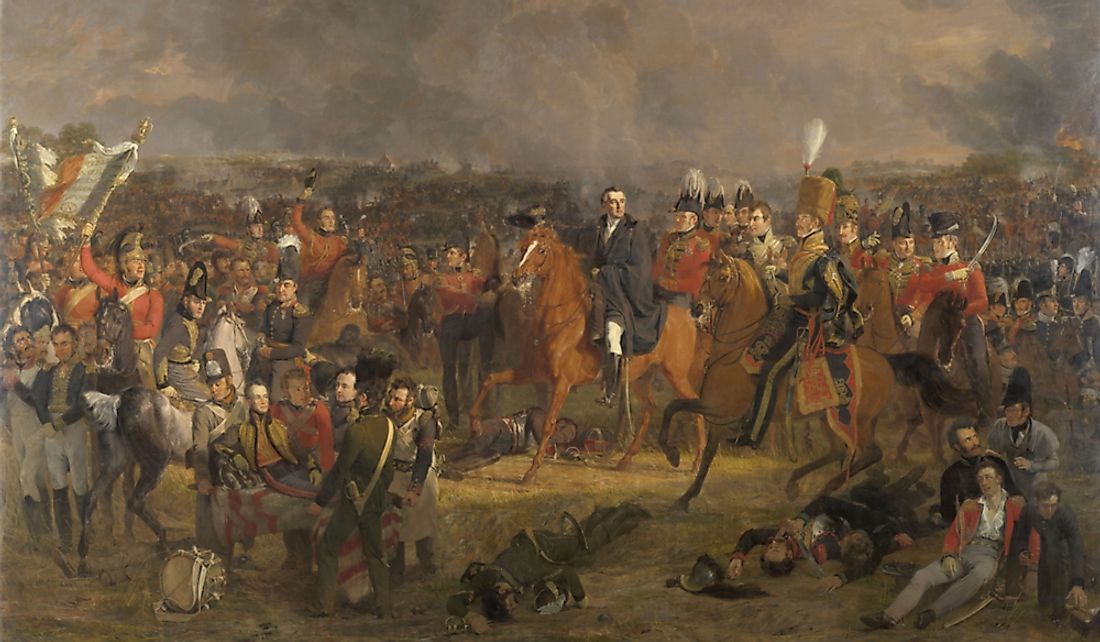Which Countries Fought At The Battle Of Waterloo?

The Battle of Waterloo was fought at a place called Braine-I'alleud, which is south of current day Waterloo. Waterloo is currently a municipality in Belgium but was at the time of the battle part of the Netherlands. The battle was fought between troops of the Seventh Coalition and those of the first French Empire. The French front was under the leadership of Napoleon Bonaparte, who had just returned to power in March 1815. The Seventh Coalition was comprised of the United Kingdom, Netherlands, Prussia, Austria, Switzerland, Sweden, Brunswick, Nassau, and Hanover. The coalition's troops were led by the Duke of Wellington from the United Kingdom, in conjunction with General von Blucher from Prussia.
Role of the Battle of Waterloo
The aim of the battle was to stop Napoleon Bonaparte from advancing into Brussels. Napoleon had returned to power in March 1815 after returning from exile after the War of the Sixth Coalition. European countries like Prussia and the United Kingdom considered him an outlaw. It was then that those against his power started to form coalitions and mobilize troops to counter him. As the emperor of France, Napoleon had already conquered a good portion of Europe. He had grown immensely in his role a military officer and now in his role of the Emperor, he posed a threat to Europe.
Events Leading to the Battle of Waterloo
Prior to the seventh coalition, there were other four coalitions that participated in a series of Napoleonic wars against France and its allied nations namely sixth, fifth, fourth and third coalitions. To be at an advantage, Napoleon with the support of the French military decided to attack before the seventh coalition allies could combine their armies. He did so at the Battle of Ligny and the Battle of Quatre Bras against the Prussian army and the United Kingdom's army respectively. The Duke of Wellington had to retreat because the Prussian army was overwhelmed at the Battle of Ligny. These two battles occurred simultaneously on June 16, 1815. Napoleon was trying to confront both troops so that none could merge with the other. As General Blucher sounded retreat for the Prussian troops, the French pursued leading to the Battle of Wavre. Here, both the Prussians and troops from the United Kingdom were on defense, blocking the French soldiers in an effort to stop their advancement. That gave the seventh coalition allies time to regroup and prepare a common front to fight the French at the Battle of Waterloo. On June 18, 1815, Napoleon was defeated as the Battle of Waterloo was fought with joint troops of the seventh coalition. He was then forced into exile again following that defeat.
Significance of the Battle
The Battle of Waterloo is considered a decisive battle in the history of Europe because it was a turning point following a series of wars waged against France. It marked the end of Napoleon's rule in Europe. Following this battle, Europe enjoyed material prosperity, peace, and technological advancement for decades. The battle fostered unity between nations.











